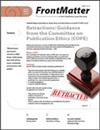微栖息地条件影响结网蜘蛛群落及其猎物,与短期野生动物围栏对森林植被的影响无关
IF 0.9
3区 农林科学
Q3 ENTOMOLOGY
引用次数: 1
摘要
摘要蜘蛛在森林食物网中发挥着关键作用,它们调节分解者的数量,并可能成为害虫和病媒的捕食者。蜘蛛群落组成部分由植被结构决定。因此,通过野生动物围栏将鹿和野猪等大型哺乳动物排除在外,可能会影响森林生态系统中蜘蛛群落及其猎物的组成。造网蜘蛛和它们的猎物是在德国东北部一片混合温带森林中围栏三年的地块以及邻近的未围栏地块中手工采集的。此外,通过筛选落叶,在围栏和未围栏的分区对落叶中的蜘蛛进行了采样。野生动物围栏并没有显著影响每个微栖息地的蜘蛛密度或群落组成。然而,围栏显著影响了不同微生境的覆盖率,因为围栏地块中较大树木的密度较高,落叶层覆盖率较高,而未围栏地块中裸露地面和枯木的比例较高。蜘蛛群落及其猎物组成在独立于围栏的微栖息地(落叶树、针叶树、枯木、林下植被、落叶层)之间存在显著差异。Thysanoptera的猎物主要被针叶树和林下植被中的蜘蛛捕获。异翅目猎物最常在林下植被中捕获,而膜翅目(不包括蚁科)猎物大多在落叶树上捕获。在混合林中,几种蜘蛛表现出在落叶树和针叶树之间的偏好。野生动物围栏改变了混合林的植被结构,并由于微栖息地可用性的改变,对蜘蛛群落及其在森林食物网中的作用产生了间接影响。本文章由计算机程序翻译,如有差异,请以英文原文为准。
Microhabitat conditions affect web-building spider communities and their prey independent of effects of short-term wildlife fencing on forest vegetation
Abstract. Spiders play a key role in forest food webs, where they regulate decomposer populations and may act as predators of pests and disease vectors. Spider community composition is determined in part by vegetation structure. Therefore, the exclusion of large mammals, such as deer and wild boar, through wildlife fencing may affect the composition of spider communities and their prey in forest ecosystems. Web-building spiders and their prey were hand-collected in plots that had been fenced for three years, as well as adjacent unfenced plots in a mixed temperate forest in north-eastern Germany. Additionally, spiders in the leaf litter were sampled in fenced and unfenced subareas by sieving litter. Wildlife fencing did not significantly affect spider densities or community composition per microhabitat. However, fencing affected the cover of different microhabitats significantly as there was a higher density of larger trees and higher leaflitter cover in fenced plots while there was a higher percentage of bare ground and deadwood in unfenced plots. Spider communities and their prey composition differed significantly between microhabitats (deciduous trees, coniferous trees, dead wood, understory vegetation, leaf litter) independent of fencing. Thysanoptera prey was mainly caught by spiders on coniferous trees and in the understory vegetation. Heteroptera prey were captured most frequently in the understory vegetation while Hymenoptera (excl. Formicidae) prey were mostly caught on deciduous trees. Several spider species showed a preference between deciduous and coniferous trees in the mixed forest. Wildlife fencing alters the vegetation structure of mixed forests and has indirect effects on spider communities and their role in forest food webs due to alteration of microhabitat availability.
求助全文
通过发布文献求助,成功后即可免费获取论文全文。
去求助
来源期刊

Journal of Arachnology
生物-昆虫学
CiteScore
2.20
自引率
10.00%
发文量
34
审稿时长
>12 weeks
期刊介绍:
The Journal of Arachnology publishes scientific articles reporting novel and significant observations and data regarding any aspect of the biology of arachnid groups. Articles must be scientifically rigorous and report substantially new information.
 求助内容:
求助内容: 应助结果提醒方式:
应助结果提醒方式:


